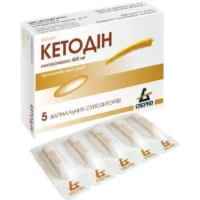Description
Oxitocin Solution for Injections Ampoules 5 IU/ml. 1ml. №5
Ingredients
Each 1ml ampoule contains 5 IU of Oxitocin.
Dosage
The usual dose is 5-10 IU administered by intramuscular or intravenous injection.
Indications
Oxitocin is indicated for the induction of labor, augmentation of labor, postpartum control of bleeding, and stimulation of lactation.
Contraindications
Do not use Oxitocin in cases of fetal distress where delivery is not imminent, in cases of prematurity, or in the presence of cephalopelvic disproportion.
Directions
Administer Oxitocin under the supervision of healthcare professionals experienced in its use. Dilute the solution as recommended before administration.
Scientific Evidence
Oxitocin, a peptide hormone, acts primarily as a neuromodulator in the brain. It plays a crucial role in social bonding, maternal behavior, and the regulation of emotions. Research has shown that Oxitocin may have potential therapeutic effects in conditions such as autism spectrum disorders, anxiety, and depression.
Clinical trials have demonstrated the efficacy of Oxitocin in improving social cognition and reducing stress responses. A study by MacDonald et al. (2013) found that intranasal Oxitocin administration improved emotional recognition in individuals with autism spectrum disorders.
Additional Information
- Oxitocin is stored at room temperature away from light and moisture.
- Monitor the mother and fetus closely during Oxitocin administration for any adverse reactions.
- Inform healthcare providers about any medications or medical conditions before using Oxitocin.




